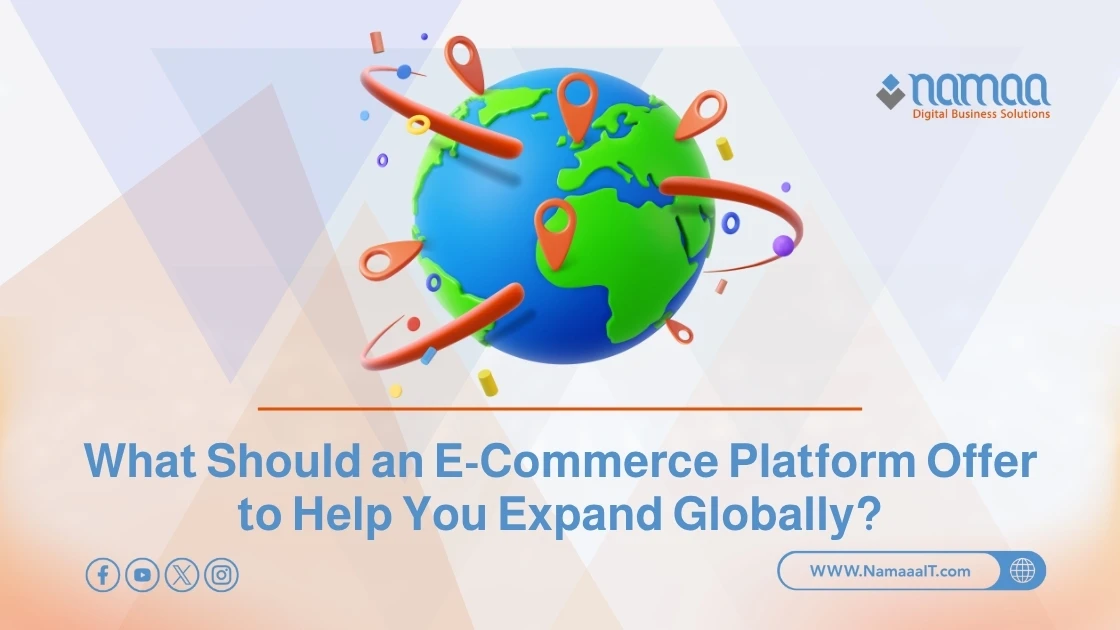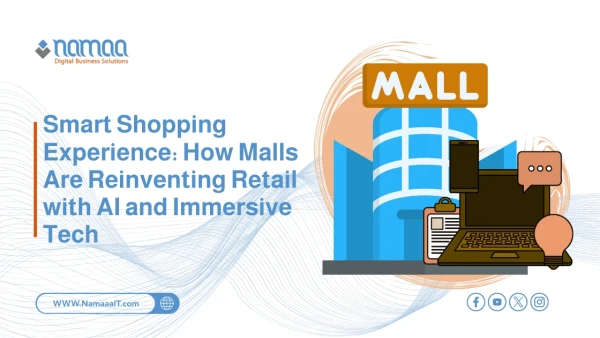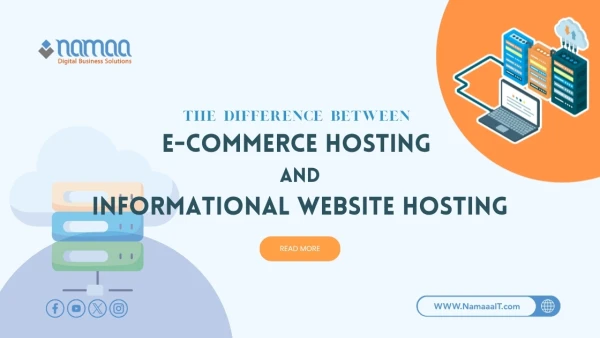When planning to expand your business into new markets around the world, having a decent e-commerce platform is not enough. Global expansion requires a flexible technical infrastructure, a seamless user experience, multilingual and multi-currency support, and strong logistics capabilities. Choosing the right platform is not just a technical step—it’s a strategic decision that impacts your ability to grow and compete internationally. In this article, we outline the key criteria to look for in an e-commerce platform if you’re targeting global markets.
Choosing the right platform is not just a technological decision—it is a strategic one that determines how well your business can adapt, grow, and thrive in a competitive global environment. So, what are the core features and capabilities that an e-commerce platform should provide to help you expand globally with success?
1. Localization and Cultural Customization
This is the cornerstone of global expansion. The platform must go beyond simple translation:
Multilingual support: The ability to display store content, product descriptions, checkout pages, and emails in multiple languages. This feature must also support right-to-left (like Arabic) and left-to-right languages.
Multi-currency and exchange rates: The platform should allow customers to view prices and make purchases in their local currency, with exchange rates updated automatically or manually. This builds trust and removes conversion barriers.
Local taxes and regulations: The ability to calculate and apply local taxes (like VAT, sales tax) automatically based on customer location and local laws.
Date, time, and address formats: The platform should adapt to local formats to ensure clarity and reduce errors in data entry and shipping.
Preferred local payment methods: Offer a wide range of payment options popular in each market (such as international credit cards, mobile wallets, local bank transfers, and cash-on-delivery systems where applicable).
2. International and Local Payment Gateways
Payment gateways are the lifeline of any business. The platform should provide:
Integration with global payment gateways: Such as Stripe, PayPal, Square, which support cross-border transactions.
Integration with regional and local gateways: To meet the preferences of customers in each market (e.g., Fawry in Egypt, Mada in Saudi Arabia, Klarna in Europe).
Fraud management and security: Robust tools to detect and prevent fraud, and compliance with data security standards (PCI DSS) to protect sensitive payment data.
3. Global Shipping and Logistics
This is one of the biggest challenges in global expansion. The platform must provide solutions for:
Integration with international and local carriers: Like DHL, FedEx, UPS, and local shipping companies in each target country.
Automated shipping cost calculation: Based on destination, weight, product dimensions, and shipping method.
Customs, duties, and tariffs management: The ability to calculate and disclose import fees and duties in advance (Delivered Duty Paid - DDP) to avoid customer surprises at delivery.
Shipment tracking: A user-friendly interface for customers to track their orders in real time.
International returns management: A clear and simple process for customers to return products from abroad.
Multi-warehouse shipping support: The ability to ship from multiple warehouses worldwide to improve delivery speed and reduce costs.
4. International Marketing and Optimization
To reach a global audience, you need strong marketing tools:
International SEO: Support for multilingual and multi-domain structures (.com, .co.uk, .de) and hreflang tags to help search engines understand targeted content.
Localized content management: The ability to create and manage marketing content tailored to each region or language, including blogs, landing pages, and promotional campaigns.
Local marketing tool integrations: Connect the platform to local ad networks (like Baidu in China, Yandex in Russia) and social media platforms popular in each market.
Flexible pricing strategies: The ability to set different product prices by market, considering purchasing power and local competition.
5. Multilingual and Cross-Time Zone Customer Support
Customer support is a cornerstone of trust and loyalty:
Multilingual support system: Provide support channels (email, live chat, phone) in multiple languages.
Cross-time zone operations: A support structure that can respond to customer queries regardless of their geographic location.
Translated knowledge base: Offer FAQs and guides in various languages.
6. Legal Compliance and Data Protection
The legal landscape varies significantly between countries:
Data protection regulations: The platform must comply with global data privacy laws (like GDPR in Europe) and local regulations (like CCPA in California).
Privacy policy and cookie management: The ability to display privacy policies and terms of service in different languages and adapt them to legal requirements in each region.
Consent management: Tools for managing user consent for data collection and marketing, especially in markets with strict regulations.
7. Advanced Analytics and Reporting
Data is essential for informed decision-making:
Regional performance analytics: Track sales performance, customer behavior, and traffic sources by country or region.
Currency conversion tracking: Understand how exchange rate fluctuations affect revenue.
Web analytics integration: The ability to integrate with Google Analytics or other tools to provide comprehensive insights.
8. Flexibility and Integration
The platform should not operate in isolation—it must integrate with your other systems:
Robust and open APIs: To connect smoothly with third-party systems like ERP, CRM, WMS, and marketing tools.
Scalability: The ability to handle large increases in product volume, orders, and traffic as your business grows in new markets.
9. Security and Reliability
Security is non-negotiable, especially when handling sensitive international data:
SSL/TLS certificates: To encrypt data between the store and customers.
DDoS protection: To ensure service continuity.
Regular data backups and disaster recovery planning: To protect important information.
Continuous security monitoring: To detect and respond to potential threats.
10. Vendor Support and Community
Even the strongest platforms need strong support:
Accessible and responsive technical support: A support team that can resolve technical issues quickly and efficiently, ideally 24/7.
Comprehensive documentation and learning resources: To help users understand and use all platform features.
An active developer and user community: Can offer alternative solutions and valuable advice.
Frequently Asked Questions about Global E-Commerce Expansion
How do I identify the right international markets to expand into first?
Through detailed market research, analyzing potential demand data, studying local competition, evaluating logistics feasibility, and considering cultural and legal aspects. Start with markets that are culturally or geographically similar to reduce early risks.
What are the hidden costs of global expansion beyond platform fees?
Hidden costs include customs and import taxes, legal compliance expenses, localized marketing campaigns, currency fluctuation impacts, international returns management, and sometimes modifying products to fit local preferences or standards.
Do I need to adapt my products for international markets?
Often, yes. Some markets require product adjustments to meet technical standards (e.g., electrical systems), cultural preferences, preferred sizes or packaging, or even labeling. Ensuring compliance with local laws and standards is essential.
What are the biggest non-technical challenges in global expansion?
Non-technical challenges include understanding cultural differences in consumer behavior, navigating legal and regulatory complexities, managing complex international supply chains, building multilingual and cross-time-zone teams, and maintaining brand consistency while localizing.
How long does it usually take to successfully expand into a new international market?
It varies widely depending on the target market size, legal complexity, and company scale. It may take 6 months to 2 years to build a strong, profitable presence in a new international market, including the research and setup phase.
Summary
✅ 75% of online shoppers prefer to buy in their native language, and 50% will not complete a purchase if their preferred local payment method isn’t available—highlighting the importance of localization.
✅ Global e-commerce sales are expected to reach $7.4 trillion by 2025—showing the vast opportunity a robust e-commerce platform can offer for expansion.
✅ 50% of customers cite high shipping costs as a reason for cart abandonment—underscoring the importance of effective global shipping and logistics solutions.
✅ 80% of consumers are concerned about data privacy—necessitating compliance with global regulations like GDPR to build trust and security.
✅ A smooth return process can increase customer loyalty by up to 85%, and 73% of consumers consider good customer service a key purchase factor—highlighting the need for multilingual customer support.




.webp)




